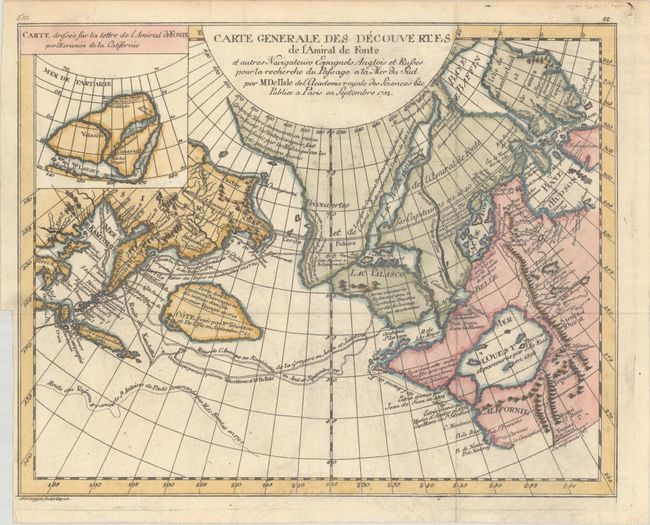Catalog Archive
Auction 199, Lot 684
"Carte Generale des Decouvertes de l'Amiral de Fonte et Autres Navigateurs Espagnols Anglois et Russes pour la Recherche du Passage a la Mer du Sud...", Robert de Vaugondy, Didier

Subject: North Pacific Ocean
Period: 1779 (published)
Publication: Diderot's Encyclopedia (Supplement)
Color: Hand Color
Size:
14.6 x 11.6 inches
37.1 x 29.5 cm
Download High Resolution Image
(or just click on image to launch the Zoom viewer)
(or just click on image to launch the Zoom viewer)

